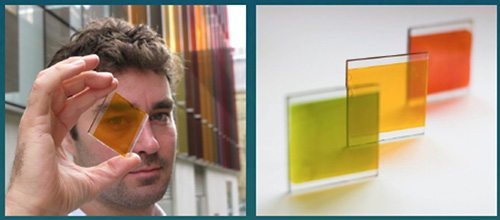Imagine, in a time in the not-too-distant future, when tall office buildings will have their photovoltaics built into their structure. Tall skyscrapers for example will provide their own energy needs through their glass windows and frontage. More than that, the buildings will be pumping clean alternative energy back into the power grid.
A bit far fetched I hear you say, perhaps your correspondent needs a Bex and a good lie down?
Not so according to Kevin Arthur, founder and CEO of Oxford Photovoltaics, a commercial solar power research spin-off from the famous university.
“What we say here is rather than attach [solar] photovoltaics to the building, why not make the building the photovoltaics?” Mr Arthur was reported by the Guardian as saying earlier this month. “If you decide to build a building out of glass, then you’ve already decided to pay for the glass. If you add this, you’re adding a very small extra cost. [The solar cell treatment] costs no more than 10% of the cost of the facade.”
So how does it work?
A solar cell thin film is dyed and added to glass substrates to produce tinted glass, according to the firm. The result is called a “dye sensitised solar cell” This is suitable for any building where glass is predominant such as skyscrapers. The added solar glass then acts as a solar generation system.
Marvellous. Just think, instead of being notoriously energy sinks cities can become major sources of renewable energy. For the fashion conscious the cells can be dyed a number of colours though some work better than others apparently.
“Within reason we can print any colour, there’s a wide range of dyes, blues and greens and reds and so on. But different colours have different efficiencies: black is very high, green is pretty good and red is good, but blue is less good,” said Arthur.
Will the special solar glass be the key to the sustainability of city buildings? Just think of the renewable energy that could be produced in a big city of the world.
The major player in this space up to now has been Australia’s very own Dyesol, who have been developing similar technology for over a decade. No doubt Oxford PV will provide some healthy competition for the pioneering Aussies. C’mon Aussies, don’t let the Pommies overtake after such a late start :-).
We’ll look for further developments on this technology as they become available. Watch this space folks.
Note: A quick reminder for solar fans of the Summer Solar BBQ on Feb. 24, organised by 100percent.org.au. It’s not too late to register a BBQ with mates to celebrate solar energy or to find one near you. Go to this page for further information, enjoy yourselves and stand up for solar energy!


 RSS - Posts
RSS - Posts



Speak Your Mind